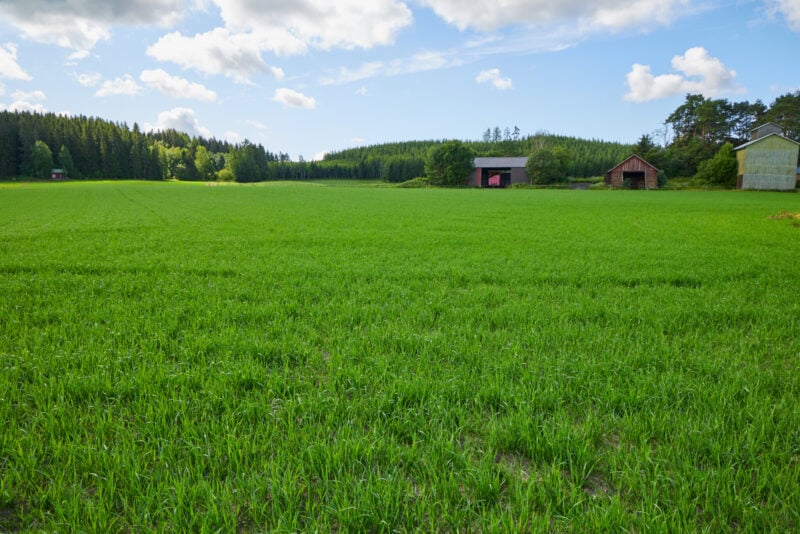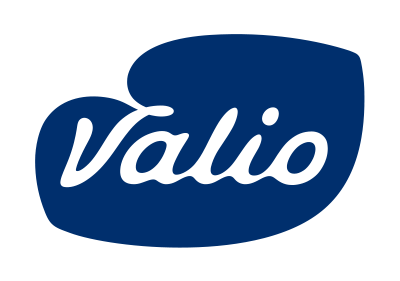Valio Food 2.0 research theme: Regenerative Production

Regenerative Production seeks solutions to mitigate and adapt to climate change, better utilize farmlands, support biodiversity, and boost animal welfare, among other things. In this article, theme leader Virpi Kling presents five practical methods for making more effective use of our soil and nature.
“As a theme lead, I am guided by a strong sense of justice: the climate work we do here at Valio aligns with my personal values. I want to contribute to the well-being of soil, nature, and animals – and equally, people,” Virpi Kling says.
Virpi Kling is a Development Manager with an education in Chemical engineering and has worked for over 20 years at Valio. She has been an essential part of climate related programs and has strong expertise in the dairy value chain and the entire food industry.
Protecting Our Soils and Natural Life
As the climate changes and ecosystems face increasing pressure, the foundations of our food system are being tested. Intensive land use, rising temperatures, and loss of natural habitats have contributed to declining soil health, shrinking biodiversity, and growing concerns around animal welfare – pointing to the need for more sustainable and resilient practices now and in the future.
“The problem is simple: we haven’t taken good enough care of our soil. Soil fertility has declined both locally and globally, and biodiversity has decreased,” says Kling.
The research theme – along with the entire Food 2.0 project and the work carried out within its ecosystem – aims to improve the entire food system. As Kling points out, by improving crop resilience and soil management, we can mitigate the effects of weather variability on yields, for example in times of drought.
“Through our research, we have the opportunity to improve soil fertility, enhance carbon sequestration, and promote biodiversity and animal welfare,” Kling adds.
To achieve the targets, various approaches are being tested and studied in collaboration – including new measurement methods and local practical pilot projects.
Five Ways of Improving Farming and Production
The research theme Regenerative production is divided into five subtasks.
Soil-specific climate impacts on a field-plot level models soil emission. The goal is to refine data on carbon sequestration at the plot level. This information must be based on modelling, which in turn requires measurements. Therefore, techniques for both modelling and measurement are being developed. The collaboration involves the Finnish Meteorological Institute and Luke (Natural Resources Institute Finland).
The restoration of low-productive peatland fields is essential, since they produce disproportionately high emissions. While peatlands can safeguard crops during droughts, poor-quality ones should be phased out due to the emissions and lack of productivity. Since the problem persists beyond land ownership, the goal is to restore these fields through afforestation or rewetting.
Forests release particles into the air that form aerosols, which can help slow down climate change. The subtask agricultural aerosols explore whether agriculture produces similar aerosols – for example, from particles generated in barns and other farming environments. If so, it will indicate climate-mitigating effects, potentially making the carbon footprint of for example dairy production smaller than expected. This is a co-research project done together with the University of Helsinki.
The loss of biodiversity is as significant a problem as climate changes. Developing practices for biodiversity-positive farming is therefore critically important. However, measuring biodiversity is challenging due to the time and costs involved in farm-level assessments. To address this, it is important to develop scalable, user-friendly tools for the cattle value chain, such as satellite-based remote sensing to assess habitats, wetlands, and stony areas. This method also offers a broader perspective beyond the cattle chain, contributing to the Food 2.0 ecosystem. In addition to primary production, action is needed across other parts of the value chain. The first pilot is underway at the Äänekoski production plant, where biodiversity improvements are being implemented on dairy premises.
In positive animal welfare a co-innovation project has been launched to apply research findings to practical use and build an Animal Welfare Verification System (AWS). The project is based on the Naseva system, a national cattle health and welfare monitoring system led by Luke. The aim is to also create commercial value through animal welfare verification, which holds significant importance and potential from export perspective.
“Together, these efforts promote regenerative farming, provide invaluable data, support the vision for a more sustainable food system, and ensure the prosperity of food production,” Virpi Kling conludes.
The Focus Points of Regenerative Production
- Soil-specific climate impacts on a field-plot level
- Restoration of low-productive peatland fields
- Agricultural aerosols
- Biodiversity-positive farming
- Positive animal welfare

Food 2.0
Food 2.0 is extensive research, development and innovation project, aiming to create a Finnish nature-smart food system.
